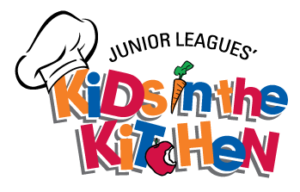Kids in the Kitchen

Teaching kids to eat healthy through Kids in the Kitchen programs can help decrease childhood obesity one family at a time. Each year, JLSL connects with community programs to promote healthy eating and lifestyles, working with kids in fun ways to teach them about healthy food and activity choices.
Kids in the Kitchen – teaching kids to eat healthy
Kids in the Kitchen programs are developed to be hands-on experiences to educate children and families about nutrition and fitness. The Association of Junior Leagues International’s (AJLI) Kids in the Kitchen (KITK) initial effort was launched during 2006 to address the growing issues of child obesity and nutrition.
KITK is based on efforts started by Junior League of Calgary through its Junior Chefs program. Teaching kids to eat healthy will help overcome child obesity for the future, which impacts us all. Check out AJLI’s information about the program, including recipes and ideas you can incorporate into your own household.
A component of this AJLI initiative is included in our annual Strong Women & Families Health & Resource Fair.
Facts About Childhood Obesity
Childhood obesity has more than doubled since 1990, and children who are obese are likely to be obese as adults.1-6 Obese children who grow into obese adults are more at risk for adult health problems such as heart disease, type 2 diabetes, stroke, several types of cancer, and osteoarthritis. 7 Healthy lifestyle habits, including healthy eating and physical activity, can lower the risk of becoming obese and developing related diseases.7
As part of its mission to improve our communities for women and children, AJLI and JLSL have partnered to teach local St. Louis-area children about making healthy choices. Kids participating in the program took home this activity and recipe book.
References

